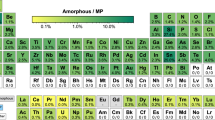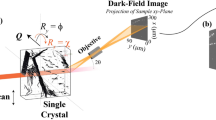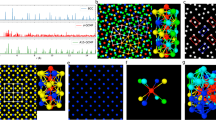Abstract
IT has been shown by Kê1 that differences in the mechanical properties of specimens of aluminium with large and small crystal sizes can be accounted for by assuming that the crystal boundaries behave as viscous liquids. Quantitative experimental evidence of the relative movement of neighbouring crystals in a manner consistent with this hypothesis has so far been lacking.
This is a preview of subscription content, access via your institution
Access options
Subscribe to this journal
Receive 51 print issues and online access
$199.00 per year
only $3.90 per issue
Buy this article
- Purchase on SpringerLink
- Instant access to full article PDF
Prices may be subject to local taxes which are calculated during checkout
Similar content being viewed by others
References
Kê, T. S., Phys. Rev., 71, 544 (1947).
Chalmers, B., Proc. Roy. Soc., A, 175, 100 (1940).
Author information
Authors and Affiliations
Rights and permissions
About this article
Cite this article
KING, R., CAHN, R. & CHALMERS, B. Mechanical Behaviour of Crystal Boundaries in Metals. Nature 161, 682 (1948). https://doi.org/10.1038/161682a0
Issue date:
DOI: https://doi.org/10.1038/161682a0
This article is cited by
-
Grain boundary sliding revisited: Developments in sliding over four decades
Journal of Materials Science (2006)
-
Observations of Creep of the Grain Boundary in High Purity Aluminum
JOM (1952)
-
Deformation of Zinc Bicrystals by Thermal Ratcheting
JOM (1952)



